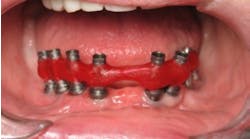ALSO BY KYLE SUMMERFORD |Assessing patient acceptance in 5 easy steps
If you have never had a practice of your own, you may be a little in the dark on what you should expect after you buy one. Prior to owning your very own dental practice, at the end of each day you walked away without any headaches or troubles … and, most importantly, no exorbitant expenses. You didn’t even have to give a second thought to overhead, such as payroll and unexpected office repairs, just to name a few expenses that come with owning a dental practice.
ALSO BY KYLE SUMMERFORD | Making the 'alternate benefit' profitable
Read these tips to find out how you can protect yourself now that you have — or are considering buying — a practice of your own.
Unexpected overhead
Whether it’s staff members’ salary, reckless spending, broken equipment, unexpected large ticket items … these are just a few things to expect when purchasing an existing dental practice. Be sure to know what you’re investing in before you negotiate the price.
Inheriting staff
When you purchased the practice you inherited, remember that the staff comes along with it. Personalities clashing, internal feuds, staff family issues … these are some things to expect that will ultimately affect a person’s work-related performance and, in turn, affect your new investment. How can you protect yourself?
Make sure to filter out those staff members over time who hurt your practice. Be sure to praise those who are on board and generate productivity.
ALSO BY KYLE SUMMERFORD | A guide for the new dentist on how to build your online reputation
Transitioning patients to a new provider
It’s hard for people, generally speaking, to accept change, especially older patients who are less resilient. Transitions don’t always go as smoothly as you may plan them. A new face around the office can be intimidating to long-time patients.
Ideally, to make things efficient and trouble-free, it may be best to have the previous owner agree to stick around for six months to a year to ensure a smooth transition.
Referral patterns
For a specialist, it’s hard to buy a practice that has no preexisting outside referral relationships. Just think about it for a second. Where will your new patients come from? How long can you continue to recycle the same database of patients over and over again? After a one-year cycle of recare and maintenance visits, you’ll see exactly what’s left over.
So should you wait it out?
No, the key is to establish relationships with dentists around your zip code. Join study clubs, visit local dental society gatherings, and participate in panel lectures. These are just a few pointers to get you headed in the right direction.
The key to remember is that the practice is now yours to run it the way you feel comfortable. Keep in mind that you must make it a slow transition to make everyone feel as comfortable as possible and attempt to integrate your principles into your new investment.









